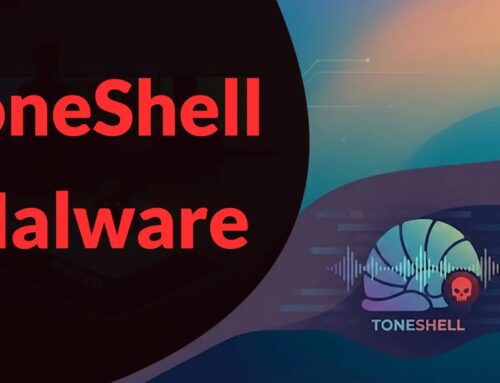
Linux Kernel’s KSMBD Subsystem Vulnerability Let Remote Attackers Exhaust Server Resources
Linux Kernel’s KSMBD Vulnerability: A Critical Resource Exhaustion Threat
In the complex landscape of server infrastructure, the stability and availability of services are paramount. A recently disclosed denial-of-service (DoS) flaw within the Linux kernel’s KSMBD subsystem has sent ripples through the open-source community, highlighting a significant threat to resource integrity. Tracked as CVE-2025-38501, this vulnerability allows an unauthenticated remote attacker to exhaust all available Server Message Block (SMB) connections, effectively rendering affected servers unreachable for legitimate network requests.
Understanding this flaw is crucial for system administrators and security professionals managing Linux-based file servers. This post will delve into the technical specifics of CVE-2025-38501, explain its impact, and provide actionable remediation strategies to safeguard your systems.
What is KSMBD?
KSMBD, or Kernel Server Message Block Daemon, is a Linux kernel module that provides SMB file-sharing capabilities directly within the kernel space. Unlike traditional user-space SMB implementations like Samba, KSMBD aims for improved performance and efficiency by integrating deeper into the operating system. It’s designed to handle file sharing for Windows clients, offering a high-performance alternative for network file system (NFS) environments.
Dissecting CVE-2025-38501: The Half-Open TCP Attack
The core of CVE-2025-38501 lies in the kernel’s handling of “half-open” TCP sessions. A standard TCP handshake involves three steps: SYN, SYN-ACK, and ACK. A “half-open” connection occurs when a client sends a SYN packet, and the server responds with a SYN-ACK, but the client never sends the final ACK. Normally, operating systems have mechanisms to time out these half-open connections to prevent resource exhaustion.
However, the vulnerability in KSMBD allows a remote, unauthenticated adversary to repeatedly initiate these half-open TCP handshakes. By exploiting this flaw, the attacker can consume all available SMB connection slots on the target server without ever establishing a full connection. This leads to a denial-of-service state where legitimate users are unable to connect to the SMB server, effectively shutting down file sharing services.
- Remote: The attack does not require physical access to the server or local network presence beyond network reachability.
- Unauthenticated: The attacker does not need any login credentials or prior authorization to exploit this vulnerability.
- Resource Exhaustion: The primary impact is the depletion of connection resources, leading to service disruption.
- Half-Open TCP Sessions: The vulnerability specifically targets the kernel’s handling of incomplete TCP handshakes.
Impact of Resource Exhaustion
The implications of CVE-2025-38501 are significant for any organization relying on KSMBD for file sharing:
- Service Downtime: The most immediate effect is the complete unavailability of SMB services, meaning users cannot access shared files or resources.
- Operational Disruption: Businesses heavily dependent on file sharing for daily operations can experience severe disruption, impacting productivity and revenue.
- Reputational Damage: For public-facing services or internal teams, prolonged downtime can harm an organization’s reputation.
- Complex Recovery: While rebooting might temporarily resolve the issue, without patching, servers remain vulnerable to repeated attacks.
Remediation Actions
Addressing CVE-2025-38501 requires proactive measures. Here’s how to protect your systems:
- Kernel Updates: The most crucial step is to apply the latest Linux kernel updates. Distributions will release patches that specifically address this vulnerability. Monitor your distribution’s security advisories closely.
- Firewall Rules: Implement robust firewall rules. Consider rate-limiting incoming SYN requests to SMB ports (typically 445/TCP) to mitigate the impact of SYN flood attacks, which this vulnerability leverages.
- Intrusion Detection/Prevention Systems (IDPS): Deploy and configure IDPS solutions to detect and potentially block suspicious network traffic patterns indicative of denial-of-service attempts. Look for signatures related to excessive half-open connections.
- Monitor KSMBD Usage: If KSMBD is not strictly necessary for your operations, consider disabling it or restricting its access to only trusted networks or hosts.
- Network Segmentation: Isolate servers running KSMBD within a segmented network accessible only to necessary users and systems. This minimizes the attack surface.
Detection and Mitigation Tools
Early detection and effective mitigation are key to responding to vulnerabilities like CVE-2025-38501. Here are some tools that can assist:
| Tool Name | Purpose | Link |
|---|---|---|
| Nmap | Network scanner for port identification and basic service enumeration. Can help identify exposed SMB services. | https://nmap.org/ |
| Suricata / Snort | Network Intrusion Detection/Prevention Systems (NIDS/NIPS) for detecting suspicious traffic patterns and DoS attempts. | https://suricata-ids.org/ https://www.snort.org/ |
| TCPdump / Wireshark | Packet sniffers for analyzing network traffic, identifying abnormal SYN ratios, and confirming DoS attempts. | https://www.tcpdump.org/ https://www.wireshark.org/ |
| Linux Auditd | System call auditing daemon for Linux, can monitor kernel-level events related to network connections and resource usage. | https://access.redhat.com/documentation/en-us/red_hat_enterprise_linux/8/html/security_hardening/managing-auditing_security-hardening |
Conclusion
The discovery of CVE-2025-38501 in the Linux kernel’s KSMBD subsystem underscores the continuous need for vigilance in cybersecurity. This denial-of-service vulnerability, allowing remote, unauthenticated attackers to exhaust server resources through half-open TCP sessions, poses a direct threat to the availability of Linux-based file services. Prompt application of kernel updates, strategic firewall configuration, and the deployment of robust intrusion detection systems are essential to mitigate this risk. Maintaining awareness of such vulnerabilities and acting swiftly to patch exposed systems is fundamental to preserving the integrity and availability of critical IT infrastructure.





